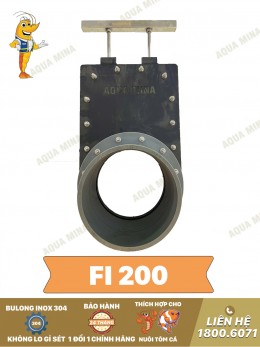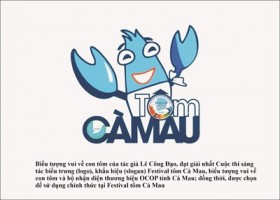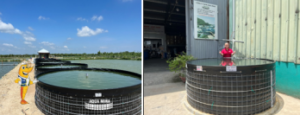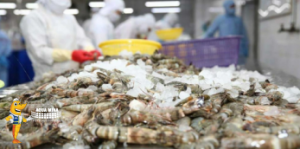Guidelines for Treating Ponds with White Spot Disease in Shrimp Farming
How to Treat Ponds Affected by White Spot Disease
When dealing with white spot disease in shrimp ponds, it’s crucial to treat both earthen ponds and tarpaulin-lined ponds to prevent any pathogens from persisting. The following steps outline the treatment for each type of pond.

Treatment for Earthen Shrimp Ponds with White Spot Disease
- Prepare the Pond Bottom: Till and plow the pond bottom, then spread agricultural lime at a rate of 500 kg per 1000 m². Mix the lime into the soil to help eliminate pathogens. Let it dry in the sun for 3–4 days. After this, level the soil and let it dry for another 2–3 days.
- Flood and Drain the Pond Bottom: Add enough water to cover the pond bottom by approximately 5 cm, allowing it to soak for 2–3 days before draining. Then, let it dry in the sun for an additional 3–5 days.
- Disinfect Entire Pond Area: Treat the entire bottom and sides of the pond to eradicate the white spot pathogen completely, including any entry points. Once drying is complete, refill the pond with 5–10 cm of water, then apply disinfectants using one of the following methods:
1. Potassium Permanganate: Use 4–5 kg per 1000 m², applying in the evening and treating the pond bottom, walls, and pathways.
2. Chlorine: Use 5 kg per 1000 m², also applied in the evening to cover the bottom, sides, and access paths.
3. Formalin: Use 4–5 liters per 1000 m², soaking the bottom and spraying on the sides and pathways.
- Final Disinfection and Water Change: After a 2–3 day soak, drain all the water and refill the pond to a depth of 1 meter. Add chlorine (25 kg per 1000 m²) and aerate to ensure even distribution, effectively sanitizing any surfaces of equipment. Finally, drain the water and refill with fresh water to begin the new farming cycle.
Treatment for Tarpaulin-Lined Shrimp Ponds with White Spot Disease
This treatment differs slightly from that for earthen ponds:
- Empty and Clean the Pond: Drain all water and clean thoroughly. Disassemble and clean any oxygenation equipment, such as paddle wheels and bottom aeration systems, then allow them to dry in the sun for 1–2 days.
- Apply Disinfectants: After cleaning, refill the pond with 5–10 cm of water and use one of the following disinfectants:
1. Potassium Permanganate: Apply 4–5 kg per 1000 m² in the evening to soak the bottom, sides, and access paths.
2. Chlorine: Apply 5 kg per 1000 m² in the evening for the bottom, sides, and pathways.
3. Formalin: Apply 4–5 liters per 1000 m² to soak the bottom and spray the walls and paths.
- Final Steps and Refill: After soaking for 2–3 days, drain the water, refill to a depth of 1 meter, and add 25 kg of chlorine per 1000 m². Aerate to ensure thorough disinfection. After this, drain the treated water, refill the pond, and proceed with the new shrimp farming cycle.
With these steps, you can effectively manage ponds affected by white spot disease in shrimp farming, ensuring thorough disinfection and preparation for future use.

Contact AQUA MINA for consultation and supply of aquaculture round tanks and aquaculture equipment for high-tech shrimp farming.
- Address: 685 National Highway 1A, Binh Hung Hoa Ward, Binh Tan District, Ho Chi Minh City
- Phone: 1800 6071 (Toll-free hotline)
- Email: sales@aquamina.com.vn or oversea@aquamina.com.vn
Aqua Mina's distributor in Japan: REX INDUSTRIES CO., LTD
- Address: 1-9-3 Hishiya-Higashi, Higashi-Osaka 578-0948 JAPAN
- Email: kimakubo@rexind.co.jp
- Phone: +81-(0)72-961-9893
- Website: http://www.rexind.co.jp/e/

Ngày đăng : 23/11/2024
2042 View
Other Articles
A new breakthrough in the prevention of diseases caused by the microsporidian parasite EHP in shrimp farming
Vietnam’s shrimp export outlook in the first quarter of 2026 continues to face heavy pressure from tariffs.
New England’s shrimp fishery to shut down for the long haul after years of decline
Crab exports to the United States account for more than 80%.
Thailand sets a target to increase shrimp production to 400,000 tons by 2026.
CTU-RAS: Recirculating Shrimp Farming for Sustainable Development
Vietnamese aquatic products reach new markets
Global Shrimp Forum: Global shrimp trade is reshaping
China’s Import Value Up 10%, Vietnamese Shrimp Remains Among Leading Suppliers
After the 7.5-magnitude offshore earthquake in Aomori that injured 34 people, Japan has issued a warning about a potential mega-earthquake
India’s shrimp exports accelerate despite the trade war with the United States
Portuguese food group acquires 18% stake in cod farming company Norcod



















.jpg)